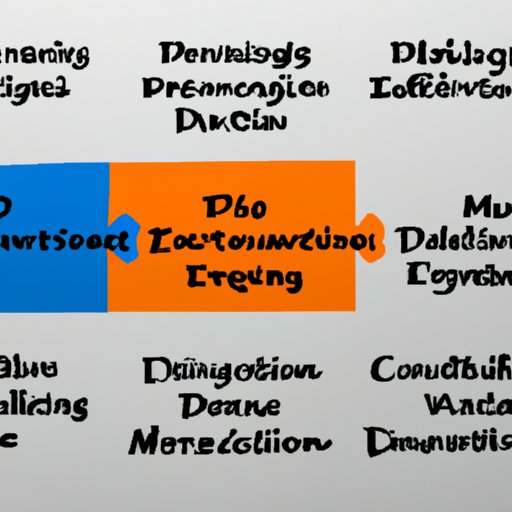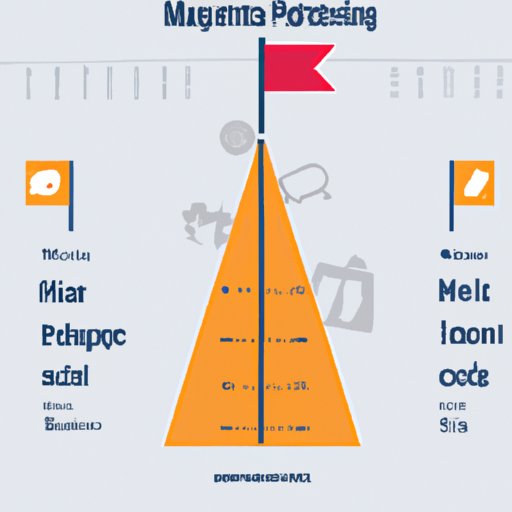Introduction
Differentiation marketing strategy is a marketing approach that focuses on creating a unique value proposition for a product or service in order to differentiate it from competitors’ offerings. By emphasizing what makes your offering distinct from others, you can capture more market share and increase customer loyalty. This article will explore the fundamentals of differentiation marketing, the benefits and challenges associated with it, and how to measure its impact.

Exploring the Fundamentals of Differentiation Marketing Strategy
The first step in any successful differentiation marketing strategy is identifying your unique selling proposition (USP). This is the one thing that sets your product or service apart from the competition. It could be anything from superior quality to better customer service. Once you’ve identified your USP, you can begin to develop a brand image that reflects it.
In addition to a strong USP, you also need to understand the different types of differentiation strategies available. These include product-based differentiation, which focuses on the features and benefits of your product; service-based differentiation, which emphasizes the quality of your customer service; and price-based differentiation, which uses pricing as a competitive advantage.

Analyzing the Benefits of Differentiation Marketing Strategy
Differentiation marketing strategies can provide several advantages to businesses, including increased market share, higher profits, enhanced brand loyalty, and improved customer satisfaction. By focusing on what makes your product or service unique, you can differentiate yourself from the competition and attract more customers. This can result in higher sales, more repeat customers, and greater profitability.
Another benefit of differentiation marketing is that it helps to create a stronger bond between you and your customers. By emphasizing the unique qualities of your business, you can build a positive reputation and foster customer loyalty. This can lead to increased customer retention, as well as word-of-mouth referrals from satisfied customers.
Finally, differentiation marketing strategies can help to boost customer satisfaction. By focusing on the unique aspects of your product or service, you can ensure that customers have a positive experience with your brand. This can lead to more repeat purchases and more positive reviews, both of which can help to drive growth.

Examining the Challenges of Differentiation Marketing Strategy
While there are many benefits to using a differentiation marketing strategy, there are also some challenges associated with it. The most significant challenge is the cost of implementation. Implementing a successful differentiation strategy requires significant time, effort, and resources. Additionally, it can be difficult to measure the success of your efforts, as it can take time before you start to see results.
Another challenge is that it can be hard to keep up with the competition. As other businesses adopt similar strategies, it can become increasingly difficult to stand out. Finally, it can be difficult to maintain consistency across multiple channels. You need to ensure that your message and brand identity remain consistent across all platforms in order to maximize the effectiveness of your strategy.

Comparing Differentiation Strategies to Traditional Marketing Strategies
When comparing differentiation marketing strategies to traditional marketing strategies, there are several key differences. Traditional marketing strategies often focus on reaching a large audience through mass media, whereas differentiation strategies tend to be more targeted and personalized. Additionally, traditional strategies tend to emphasize promotional activities such as advertising and discounts, while differentiation strategies rely more heavily on building a strong brand image.
Each approach has its own advantages and disadvantages. Traditional marketing strategies are typically less expensive and easier to implement, but they can be less effective in terms of driving customer loyalty and engagement. On the other hand, differentiation strategies require more time and effort, but they can be more effective in terms of building a strong brand image and increasing customer loyalty.
Developing a Differentiation Marketing Strategy for Your Business
If you’re considering implementing a differentiation marketing strategy for your business, there are several steps you should take. First, you should research your competitors to identify their unique selling propositions and brand images. Then, you should define your target audience and craft a unique value proposition for them. Next, you should design a brand identity that reflects your USP and resonates with your target audience. Finally, you should create a plan to reach your audience and spread the word about your unique offering.
Case Study: A Successful Differentiation Marketing Strategy
One example of a successful differentiation marketing strategy comes from the food delivery service Grubhub. When the company was founded in 2004, its goal was to make ordering food online easy and convenient. To achieve this, Grubhub developed a unique value proposition – providing a wide selection of restaurants and fast delivery times – and a brand identity centered around convenience and ease of use.
Grubhub focused on creating a user-friendly website and mobile app, as well as developing partnerships with restaurants to increase the selection of available dishes. The company also invested heavily in advertising and marketing campaigns to promote its unique offering. As a result, Grubhub was able to quickly gain market share and become one of the leading food delivery services in the United States.
Understanding How to Measure the Impact of Differentiation Marketing
Once you’ve implemented a differentiation marketing strategy, it’s important to track and measure its impact. The best way to do this is by establishing key performance indicators (KPIs) that reflect the success of your efforts. These could include metrics such as customer satisfaction, market share, and revenue growth. Once you’ve established your KPIs, you should track them over time to get a better understanding of the impact of your strategy.
You should also adjust your strategy if necessary. If your KPIs aren’t meeting your expectations, you should analyze the data to determine where improvements can be made. This could mean changing your messaging, revising your brand identity, or adjusting your targeting strategy.
Conclusion
Differentiation marketing strategies can be an effective way to stand out from the competition, increase market share, and improve customer satisfaction. However, they require significant time and resources to implement correctly. It’s important to understand the fundamentals of differentiation marketing, the benefits and challenges associated with it, and how to measure its impact. With the right approach, your differentiation strategy can help you gain a competitive edge and drive growth for your business.
(Note: Is this article not meeting your expectations? Do you have knowledge or insights to share? Unlock new opportunities and expand your reach by joining our authors team. Click Registration to join us and share your expertise with our readers.)
